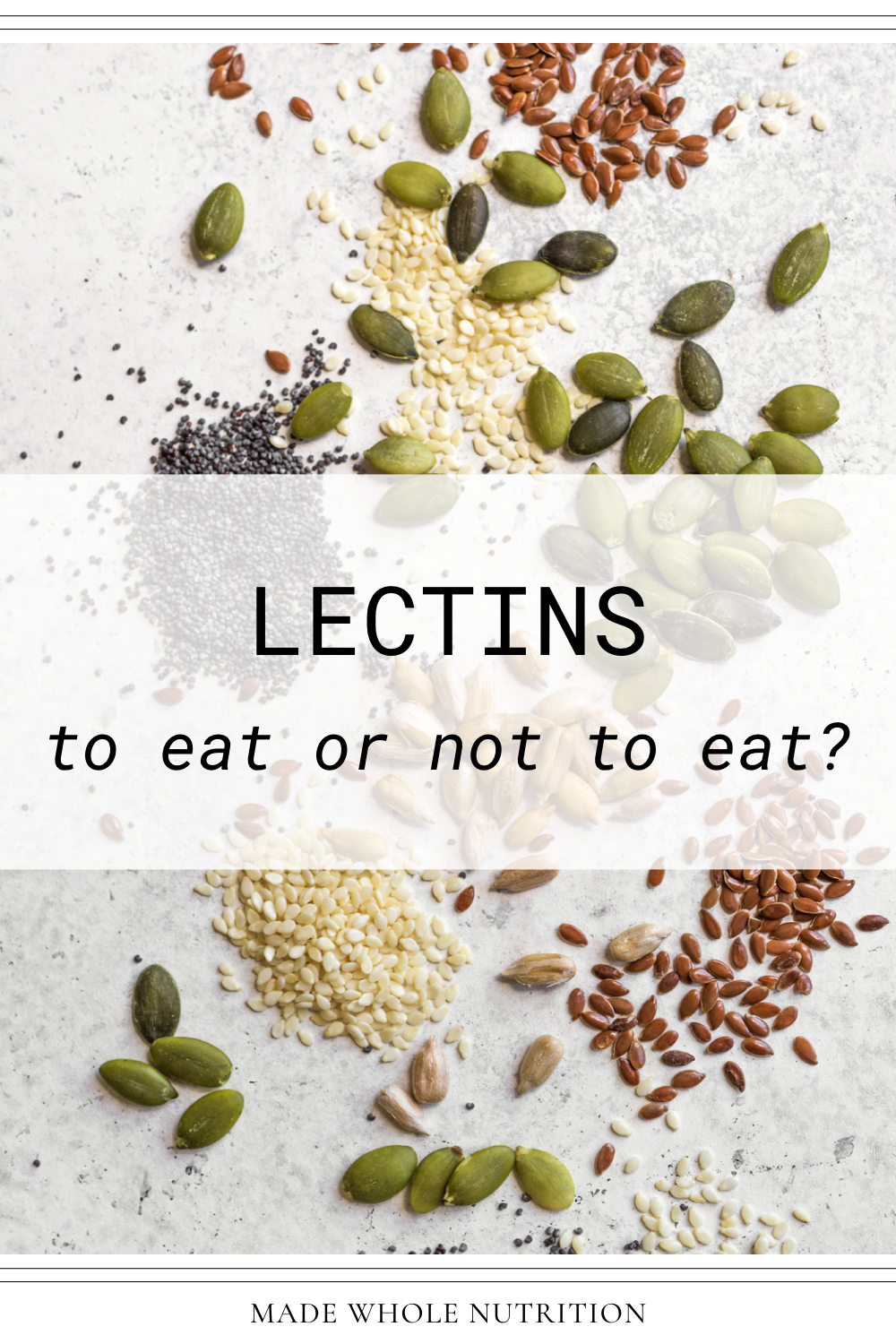LECTINS: to eat or not to eat?
WHAT ARE LECTINS?
Lectins are proteins that bind to carbohydrates.
They are found in most organisms, including humans, where they play a role in cell communication, tissue development, and immunity.
Plants produce lectins as a defense mechanism (in other words, to protect against being eaten).
PLANT PROTECTION
Plant lectins are usually concentrated in the seed, which is the most precious part of the plant because it holds the potential for new life.
The main sources of dietary lectins are beans, legumes, grains, nuts, and seeds.
HIGH-LECTIN FOODS
raw beans (kidney, mung, pinto, garbanzo, black)
raw lentils
raw soybeans
raw peanuts
raw whole grains (esp wheat, barley, corn, quinoa, oats)
raw nightshades (potatoes, eggplant, peppers, tomatoes)
raw nuts (esp almonds)
raw seeds
TO EAT OR NOT TO EAT?
Lectins have received a lot of attention as a compound to minimize.
Some people—particularly those with autoimmune responses—may experience digestive issues from consuming high-lectin foods.
However, this is not a reason for everyone to eliminate lectin-containing foods from their diet.
PROPER PREPARATION
Lectins are almost completely destroyed when soaked, sprouted, or cooked.
When properly-prepared, these plant foods can be valuable sources of vitamins, minerals, fiber, protein, and phytonutrients.
In fact, there is preliminary research into using lectins to inhibit cancer growth.
While there are bioindividual exceptions, most people do not have to worry about lectins in the context of a properly-prepared, whole food diet.
Are you a health educator that wants to use this content with your clients? Customize the handout template in less time than it would take to even think about hiring a graphic designer.
References
Jones, D. S., Bland, J. S., & Quinn, S. (2010). Textbook of Functional Medicine. Institute for Functional Medicine.
Gaby, A. R. (2017). Nutritional Medicine (2nd ed.). Fritz Perlberg Publishing.
Ballantyne, S. (2013). The Paleo Approach: Reverse Autoimmune Disease and Heal your Body. Victory Belt Publishing Inc.
Ballantyne, S. (2017). Paleo Principles. Victory Belt Publishing, Inc.
Petroski, Weston, and Deanna M. Minich 2020. "Is There Such a Thing as “Anti-Nutrients”? A Narrative Review of Perceived Problematic Plant Compounds" Nutrients 12, no. 10: 2929. https://doi.org/10.3390/nu12102929




